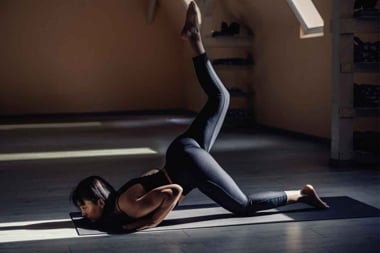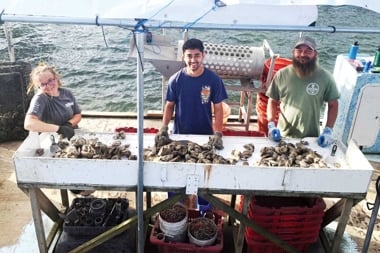
If just thinking about head lice makes your scalp itch, imagine actually having them. If you have young children, you may be doing more than just imagining. You may be dealing with this common, contagious condition.
If just thinking about head lice makes your scalp itch, imagine actually having them. If you have young children, you may be doing more than just imagining. You may be dealing with this common, contagious condition.
By some estimates as many as 1.5 million Canadian school kids may be scratching their scalps over head lice in any given year.
What are these little critters?
According to the Canadian Pediatric Society, head lice do not carry disease and are not a health hazard. Greyish-brown and about the size of a sesame seed, lice survive by sucking blood from the scalp. They often hide behind the ears or close to the hairline.
Head lice lay tiny teardrop-shaped, whitish eggs in shells called nits. The nits attach to individual hairs with a tough, gluey cement, making them impossible to remove with ordinary shampooing. After a seven- to 10-day incubation period, the nits hatch, leaving behind a dull grey casing. They mature within a week and start the cycle again.
Head hopping
Lice don’t have wings and are only spread through contact. This happens directly when children sit or lie together and touch heads, or indirectly when their clothing touches or they share infested hats, scarves, bike helmets, headphones, hairbrushes, toys, or bedding.
Head lice used to symbolize poverty or poor hygiene. But they’re egalitarian and pay no attention to socioeconomic status, hair hygiene, or length. They are, however, more common in girls and children age three to 11.
Most primary schools and daycare centres find a few children with lice every year, particularly in the fall, though a full infestation is rare.
From scratching to screening
You can’t prevent head lice. However, you can lessen your child’s risk by reminding her not to share anything that touches her head—from hats to headphones. Using a shampoo containing fatty acids such as coconut oil or tea tree oil also helps.
If your child’s scalp is already itchy, particularly around the hairline and behind the ears, that could be a sign of infestation. But don’t rely on scratching alone since not all children feel itchy.
Do weekly louse screenings. Part your child’s hair and examine her scalp in a strong light. Check for tiny white glistening eggs or grey casings that are hard to dislodge. If your child has them, check everyone in the house and inform the school.
Help! They’re here
You might be tempted to reach for the strongest delouser available. However, conventional delousing shampoos contain pediculicides (lice insecticides) such as pyrethrins, permethrin, or lindane that have been linked to health concerns and may cause scalp itching or burning. Avoid lindane products for children under 17 or if you’re pregnant or nursing.
Don’t use delousing shampoos as a preventative. Repeated use leads to resistance in the insects. Never use pet flea or tick treatments, insect sprays, or kerosene on your child’s head.
No matter what product you choose, you must use a nit comb to dislodge lice and nits. Disinfect the comb afterward. Because most products don’t work on both nits and lice, repeat the treatment seven to nine days later to get newly hatched lice. Recheck frequently for another two to three weeks. Always read instructions carefully.
Louse and home
As soon as you discover lice, wash anything your child’s head has touched, including linens, towels, and clothing in very hot water, and then dry in a hot dryer for 20 minutes. Store brushes and head gear that can’t be washed in plastic bags for several days or in the freezer. In winter, store the items outside for 24 hours.
Don’t fumigate. Public health officials agree that’s overkill. However, you can vacuum rugs, upholstered furniture, mattresses, pillows, and car seats. Since head lice can’t live for more than a day or two without a host, concentrate on your child’s scalp rather than on the house.
Head lice aren’t fun. But if your child gets them, you don’t have to pull your—or her—hair out.
Natural and effective
Alternatives to conventional delousing products include tea tree, olive, coconut, or baby oils or shampoos containing these fatty acids. An Israeli study found a combination of coconut oil, anise oil, and ylang ylang oil was as successful as the control pediculicide.
Try natural enzyme-based shampoos that loosen the glue that attaches the nits to the hair and dissolves their outside shell, making them easier to remove. Look for products containing protease, lipase, cellulase, and amylase.
Check out kits that include an organic-based solution, a comb, magnifier, tweezers, and cleaning brush for the comb.
Homeade delousing recipe
Many people avoid chemical additives by creating their own homemade delousing shampoos. While there are no scientific studies to prove they work, plenty of people still swear by their homemade creations. Make your own delousing shampoo and decide for yourself. Here’s how.
3/4 cup (180 mL) warm water
20 drops tea tree oil
20 drops lavender oil
5 drops hair shampoo
Combine all ingredients and use mixture to wash hair. Leave lather in hair for 5 minutes, being careful to avoid getting in eyes. Rinse and repeat until you’re sure all lice and nits are gone.




